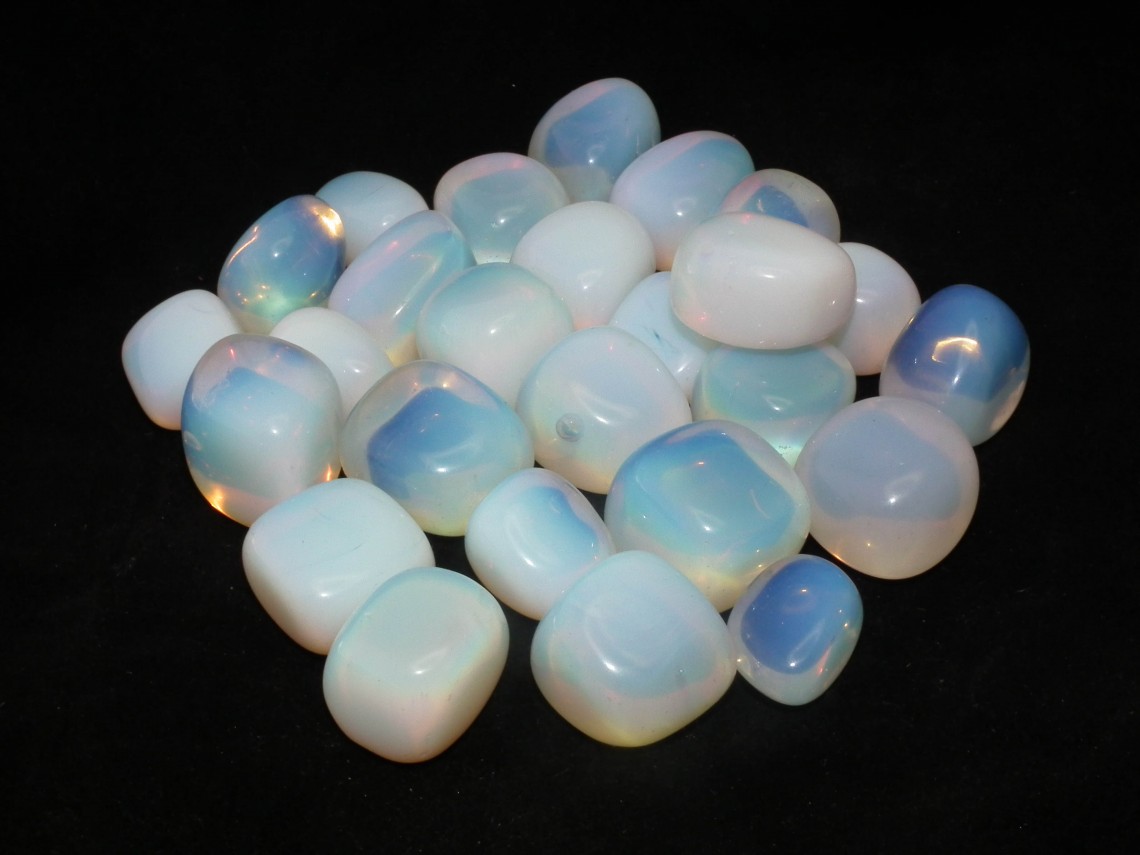
Published at 1st May 2018
Modified at 4th Jan 2023
Opal vs Opalite — What's the Difference?
 Are you trying to figure out the specific
difference between Opal, Opalite and natural Opalite? If yes, you’re not alone. Most of us are
already aware that Opals are one of the world’s most beautiful gemstones and of
course, they’re typically known for their play of color. The very first thing
you should know is that the gemstone Opal is natural — It’s formed from a
solution of silicon dioxide and water. Essentially, this precious gemstone is
formed when water runs down the earth and seeps down into crevasses in the
rock. The water eventually evaporates thus causing the silica to dry out and
harden into precious Opal. It’s good to know that Opals usually have an
eye-catching display of color coupled with fascinating patterns that you’re
sure to love.
Are you trying to figure out the specific
difference between Opal, Opalite and natural Opalite? If yes, you’re not alone. Most of us are
already aware that Opals are one of the world’s most beautiful gemstones and of
course, they’re typically known for their play of color. The very first thing
you should know is that the gemstone Opal is natural — It’s formed from a
solution of silicon dioxide and water. Essentially, this precious gemstone is
formed when water runs down the earth and seeps down into crevasses in the
rock. The water eventually evaporates thus causing the silica to dry out and
harden into precious Opal. It’s good to know that Opals usually have an
eye-catching display of color coupled with fascinating patterns that you’re
sure to love.
Opalite – The Man-Made Gem
On the flip side, Opalite is a man-made variety of glass — in essence, it has no connection to nature whatsoever. It’s just pretty glass which happens to be called Opalite. In fact, Opalite is a trade name for man-made Opal-like stones. What’s more, Opalite does not have fire or play of color and it tends to come in a variety of colors and inclusions. It’s also important to note that the name Opalite can also be used to refer to Tiffany Stone or Bertrandite. Most people also consider Opalite to be the general term for low-grade Opal with inclusions. Opalite is flawless but of course, it cannot be likened to the beauty of the gemstone Opal.

What About Green Opalite or Opalite Cat’s Eye?
This is where it starts to get confusing. While Opalite is a man made gemstone as mentioned above, there is a natural stone that is often called Green Opalite or Opalite Cat’s Eye. This stone is typically found in the United States, Australia, Brazil, Tanzania, Iceland, Mexico, Peru, UK, Canada and Slovakia. It has a unique green appearance, so it is easy to tell the difference between the natural stone and the man-made version of Opalite.
When the stone is cut into a cabochon and it
begins to display a cat’s eye effect, that is when it is called Opalite Cat’s
Eye.

Chemical Makeup of Natural Opalite
Natural Opalite (as opposed to the man made Opalite) shares the same basic chemical properties as Opal. It is made of tiny spheres of Silicon Dioxide which stack onto of each other in a pyramid grid shape. This grid is what allows the cat’s eye effect to be displayed when the stone is cut into a high domed cabochon.
SHOP FOR NATURAL OPALITE
Search the Opal Encyclopedia
Related Auctions
Related Articles
Australian Black Opal is one of the rarest gemstones on earth. It has every color of the rainbow on a black ground which makes the colors dance.
8th May 2018
Boulder Opal is one of the most undervalue opals valuable on the market. Learn more about this unique opal and browse the beautifully stones we have for sale.
29th May 2019
With a passion for opals, Wayne and Estella Sedawie established Opal Plus more that 14 years ago and have found the internet to be a valuable tool. It’s where most of the company’s international transactions take place.
17th Oct 2018
Latest Articles
An opal’s price comes down to a variety of factors, all of which we’ve broken down in this guide to opal grading and prices. Learn all about opal grading and the prices of each type of opal!
19th Jul 2023
Come on a journey and learn about the healing power of opals from our guest writer Vivien Schapera from Crystal Healing Techniques!
20th May 2023
The Flame (or Fire) Queen opal is the world’s most expensive opal, sold for the modern equivalent of $3 million dollars. Learn all about its history and qualities!
18th Feb 2023
Article Categories
All there is to know about Opals including Black Opals, Ethiopian Opals & Boulder Opal
15 Articles
Check out our fascinating information and articles on all things amazing in the Opal world
43 Articles
Opal Auctions sellers who are approved as opal Verified Sellers
4 Articles


![CATS EYE OPALITE FROM TANZANINA AFRICA 2.9 CTS [V73]](https://liveplatforms-production.b-cdn.net/tenants/oa/uploads/images/140000-144999/144174/144174_1229044434.jpg?width=480&aspect_ratio=1001%3A1000)
![CATS EYE OPALITE FROM TANZANINA AFRICA 3.2 CTS [V82]](https://liveplatforms-production.b-cdn.net/tenants/oa/uploads/images/140000-144999/144184/144184_1229045036.jpg?width=480&aspect_ratio=1001%3A1000)
![CATS EYE OPALITE FROM TANZANINA AFRICA 2.1 CTS [V89]](https://liveplatforms-production.b-cdn.net/tenants/oa/uploads/images/140000-144999/144192/144192_1229045542.jpg?width=480&aspect_ratio=1001%3A1000)
![CATS EYE OPALITE FROM TANZANINA AFRICA 2.8 CTS [V91]](https://liveplatforms-production.b-cdn.net/tenants/oa/uploads/images/140000-144999/144194/144194_1229045673.jpg?width=480&aspect_ratio=1001%3A1000)